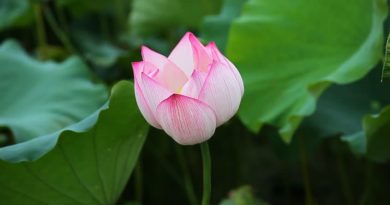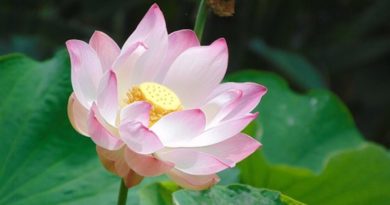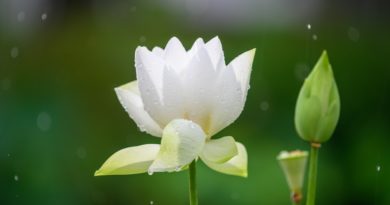Nội Dung Chính
The Essence of Tipiṭaka – 5. MAJJHIMA NIKĀYA: Uparipaṇṇāsa Pāḷi
3 Uparipaṇṇāsa Pāḷi
(a) Devadaha Vagga
Devadaha Sutta
This discourse was given by the Buddha at Devadaha in the country of the Sakyans to refute the wrong views of the Nigaṇṭhas. The Nigaṇṭhas believed that whatever a person experienced in this life was caused by former action. They practised austerity as a penance to put an end to the result of former action. The Buddha taught them the right path that would lead to the end of suffering.
Pañcattaya Sutta
This discourse was given by the Buddha to bhikkhus at Sāvatthi to explain the wrong beliefs of other sects speculating on whether the world is finite or infinite, etc.
Kinti Sutta
This discourse was given by the Buddha at Pisinārā. The Buddha explained that he taught the Dhamma not for the sake of gain, such as robes, alms-food, lodgings, etc., nor in expectation of future happy existences. His teachings, namely, the four methods of steadfast mindfulness, the four right efforts, etc., in short, the thirty-seven factors of enlightenment were for the attainment of higher knowledge leading to the end of suffering. Whenever there was a dispute over the doctrine with regard to meanings and words, it should be resolved strictly in accordance with these dhammas.
Sāmagāma Sutta
Nigaṇṭha Nāṭaputta had recently died at Pāvā and his followers had split into two groups. On being informed by Ānanda that he was worried lest there be such a schism among the order, after the passing away of the Buddha, the Buddha taught this discourse on imperfect and perfect teachers and disciples, on disputes and their origin, and on the essentials of his teaching.
Sunakkhatta Sutta
Bhikkhu Sunakkhatta, a former Licchavi prince, once enquired of the Buddha whether all the bhikkhus who came to the Buddha and declared their attainment of arahatship actually attained it. The Buddha said some of them actually did attain arahatship whereas some deceived themselves; again others claimed arahatship, knowing full well that they were not entitled to it, simply to trouble him with unnecessary questions. The Buddha then taught him the essential dhammas in which one must become accomplished before one could claim arahatship.
Āneñja-sappāya Sutta
This discourse was given by the Buddha while he was staying once at Kammāsadhamma, in the country of the Kurus. The Buddha explained to the bhikkhus the dangers of enjoying sensual pleasures, which were transitory, empty and deceptive. He said he had shown them the path leading to imperturbability (āneñja-sappāya), to the realm of nothingness, to the realm of neither consciousness nor non-consciousness, and ultimately to nibbāna. He then urged the bhikkhus: “Go to the forest, to solitude. Strive hard in meditation.”
Gaṇakamoggallāna Sutta
The Buddha was once asked by the Brahmin Gaṇaka Moggallāna whether there were systematic rules, practices and methods in his teaching, just as there were training rules, manuals, guidances in various branches of worldly knowledge. The Buddha told him about the Dhamma giving details about precepts to be observed, disciplinary rules to be followed, various concentrations to be developed and jhānas and paññās to be achieved step by step.
Gopakamoggallāna Sutta
Two leading brahmins of Rājagaha asked the Venerable Ānanda whether the Buddha had appointed a particular thera to be the head of the Sangha after he passed away. Ānanda informed them there was no such person. No person could substitute for the Buddha. They wanted to know the if the Sangha had agreed upon a certain bhikkhu to be their head. When Ānanda told them there was no such person, they wondered how the Sangha could remain in agreement and unity. Ānanda then explained to them that they had refuge in the Dhamma, and that the Sangha of each locality recited together the Pāṭimokkha, the summary of disciplinary rules, every half month.
Mahāpuṇṇama Sutta
The Buddha was sitting in the midst of a large number of bhikkhus out in the open on a full moon night. All the bhikkhus were intently engaged in meditation. The silence of the night was broken by the oldest of the meditating bhikkhus who, with the permission of the Buddha, asked him about the five aggregates of grasping, how craving developed with respect to each aggregate, and how craving would cease. The Buddha explained each point raised by the bhikkhu to the great benefit of the assembled Sangha.
Cūḷapuṇṇama Sutta
This discourse was given on how to differentiate between a good man and a bad man, with detailed description of the characteristics of good and bad men.
(b) Ānupada Vagga
Ānupada Sutta
This discourse was given at Sāvatthi. The Buddha brought out in full detail the virtues of one of his two chief disciples, the Venerable Sāriputta, extolling his wisdom which was extensive like the big earth, describing how, unlike other ordinary disciples who had attained arahatship, the Venerable Sāriputta went through the practices for development of sīla, samādhi and paññā in a very thorough manner, step by step, contemplating very intensely on the minutest phenomenon of “arising and perishing” until he gained the highest goal of the holy life. The Buddha explained also how the Venerable Sāriputta was fully accomplished in the Dhamma to deserve the honour of being a chief disciple of the Buddha.
Chabbisodhana Sutta
The Buddha said that when any bhikkhu claimed the attainment of arahatship, his claim should not be admitted or rejected outright. His claim should be carefully scrutinized according to the guiding principles provided in this discourse.
Sappurisa Sutta
This describes how a good, worthy man is to be distinguished from a bad, unworthy person enumerating twenty-six characteristics by which each individual is to be judged.
Sevitabbāsevitabba Sutta
This discourse was given briefly by the Buddha, and the Venerable Sāriputta continued to expound it in more detail. It deals with practices and actions which a bhikkhu should or should not resort to. Whatever action or practice of object is conducive to one’s spiritual progress and development should be resorted to and made use of; whatever is detrimental to one’s spiritual advancement should be rejected.
Bahudhātuka Sutta
This discourse is an analytical study of elements (dhātu), bases (āyatana), the Law of Dependent Origination, and the right of wrong causes. Only the bhikkhu skilled in these studies may be reckoned as a wise person.
Isigili Sutta
This discourse was given by the Buddha at Isigili, one of the hills surrounding Rājagaha. This is an account of why this hill was called by that name and of the many paccekabuddhas who used to dwell there.
Mahācattārīsaka Sutta
This discourse is a detailed exposition on Right Concentration which has its base in the other seven constituent parts of the Noble Path, and on twenty meritorious dhammas.
Ānāpānassati Sutta
Ānāpānassati as a method of meditation was explained to a large gathering of bhikkhus including nearly all well-known senior disciples such as the Venerable Sāriputta, Mahā Moggallāna, Mahā Kassapa, Anuruddha, Ānanda etc. Development of mindfulness of respiration establishes a person in the four methods of steadfast mindfulness. The four methods of steadfast mindfulness, being developed, establishes a person in the seven factors of enlightenment. The seven factors of enlightenment, being developed, brings about insight knowledge and emancipation.
Kāyagatāsati Sutta
This discourse describes the meditation practice involving contemplation on the thirty-two parts of the body. The practical steps in the method as well as its advantages are fully explained.
Saṅkhārupapatti Sutta
This discourse explains how its possible to have one’s wish fulfilled if one is well established in the five wholesome dhammas, namely: faith, moral conduct, learning, liberality and wisdom. §
(c) Suññata Vagga
Cūḷasuññata Sutta
The Buddha once told Ānanda that he often dwelt in the liberation of the void, suññata-vihāra. When requested by Ānanda, he explained what liberation of the void meant-liberation through insight that discerns voidness of self.
Mahāsuññata Sutta
Seeing many bhikkhus living together in a crowded dwelling place, the Buddha told Ānanda that a bhikkhu should not like living in company. Solitude is most beneficial for a bhikkhu. He urged bhikkhus to look upon him as a sincere friend who would repeatedly point out their faults to help correct them.
Acchariya-abbhuta Sutta
This discourse is an account of the twenty marvelous attributes of the Buddha as extolled by the Venerable Ānanda.
Bākula Sutta
Bhikkhu Bākula, aged one hundred and sixty years, met his old friend, the naked ascetic Kassapa, after he had been in the order of the Buddha for eighty years. Kassapa asked him how often he had indulged in sexual intercourse during those eighty years. Bākula told his friend the marvellous attributes he possessed as an arahat, including the fact that he became an arahat after seven days of strenuous endeavour, after which he was completely rid of moral defilements.
Dantabhūmi Sutta
In this discourse the Buddha explained to the novice Aciravata how a young prince like Prince Jayasena, son of King Bimbisāra could not hope to know, to see, to realize such dhammas as concentration and jhānas, living as he did in the lap of luxury, surrounded by pleasures of the senses, enjoying the pleasures of the senses and consumed and overwhelmed by the flames of desire. The Buddha pointed out the difference in outlook between an arahat and an ordinary uninstructed person giving the simile of a tamed elephant and wild elephant of the forest.
Bhūmija Sutta
This discourse was given by the Venerable Bhūmija to his nephew, Prince Jayasena to explain how fruition would result by practising the Noble Path of Eight Constituents. The Buddha confirmed that only by following the right path, namely, the Noble Path of Eight Constituents and not any other path, would fruition result. The Buddha gave the similes of attempting to make oil out of sand, squeezing the horns of a cow for milk, churning water to make butter, and rubbing two pieces of wet green wood to make fire.
Anuruddha Sutta
This discourse was given by the Venerable Anuruddha to Pañcakaṅga, the carpenter, to explain the difference between appamāna cetovimutti-liberation through practice of four brahmavihāra meditations and mahaggata cetovimutti-liberation through kasiṇa meditation using a meditational device.
Upakkilesa Sutta
Once the Buddha left Kosambī because of quarrelling, contentious bhikkhus and went to Pācīnavaṃsa Park where the Venerable Anuruddha, the Venerable Nandiya and the Venerable Kimbila were staying. When these bhikkhus informed the Buddha about the aura (obhāsa) and vision (dassana) of various shapes and forms they perceived in the course of their meditation, the Buddha taught them about upakkilesa (mental defilements), that appear at a certain stage in the meditation process. They should be on their guard not to be led astray by these deceptive defilements.
Bālapaṇḍita Sutta
This discourse was given by the Buddha at Sāvatthi on fools and the characteristic behaviour of fools; on how evil thoughts, words and deeds of fools harm themselves and others; and on how these evil actions lead fools to states of misery and woe. The utter wretchedness and intense suffering in such states are beyond description. Once a fool through his evil actions finds himself in one of the nether regions, there is very little likelihood for him to rise again to the upper realms. The chances are more remote than that of a blind turtle to get his head through a single hole in a yoke which is being tossed about in a stormy sea.
The discourse deals also with the wise and their characteristics; the wholesome thoughts, words and deeds of the wise, the wholesome effects resulting from such meritorious actions and the bliss enjoyed by them in the realms of happiness.
Devadūta Sutta
This is a discourse on evil results arising from evil action, giving details of suffering in realms of misery and woe.
(d) Vibhaṅga Vagga
Bhaddekaratta Sutta
This sutta, which means “a discourse on a night of good meditation” gives a detailed description of Vipassana meditation. The Buddha urged the bhikkhus not to dwell in the past which was gone, nor to seek the future which was unattained yet, but to perceive the Dhamma in the phenomena presently occurring and at the same time not to become involved in and attached to them.
Ānanda-bhaddekaratta Sutta
This is a discourse in which the Venerable Ānanda repeated to the bhikkhus the Bhaddekaratta Sutta, for which performance he was highly commended by the Buddha.
Mahākaccāna-bhaddekaratta Sutta
This is a detailed exposition by the Venerable Mahākaccāna on Vipassana meditation of the five khandhas as explained by the Buddha in the Bhaddekaratta Sutta. The Venerable Mahākaccāna was commended by the Buddha for his exposition.
Lomasakaṅgiya-bhaddekaratta Sutta
This is a detailed exposition by the Venerable Lomasakaṅgiya on Vipassana meditation of the five khandhas as explained in the Bhaddekaratta Sutta.
Cūḷakamma-vibhaṅga Sutta
Young Subha, son of the brahmin Todeyya, was curious to know why some were born in high class families, some in low class families; why some were born rich, others poor; why some were beautiful, others ugly; why some were of good health with a long span of life, others of poor health with a short span of life, etc. He approached the Buddha and asked fourteen questions in all to satisfy his curiosity. The Buddha gave a long discourse on kamma and its resultant effects. Deeds, words and thoughts have endless consequences of joy and sorrow to be experienced in this very life and hereafter. Men depend on their own deeds and nothing else for their condition and status in life.
Mahākamma-vibhaṅga Sutta
This is another discourse on kamma and its resultant effects which are most difficult to foresee. How the workings of kamma are most strange and surprising is explained with reference to four types of individuals.
Saḷāyatana-vibhaṅga Sutta
This discourse is a detailed analytical exposition by the Buddha on the six internal sense bases, the six external sense bases, the six types of consciousness arising from the six types of contact, etc.
Uddesa-vibhaṅga Sutta
In this discourse the Buddha taught briefly how restraint of the mind with regard to external sense bases and non-attachment to internal sense bases led to the cessation of suffering. The Venerable Kaccāna gave an exposition on this subject which earned him praise from the Buddha.
Araṇa-vibhaṅga Sutta
This discourse is an exhortation on the practice of the middle path, avoiding the two extremes of indulgence in sensual pleasures and practice of self-mortification, and on modes of conduct; not indulging in backbiting; not keeping to colloquial vocabulary only and not spurning the conventional usage of the language, but speaking gently, slowly.
Dhātu-vibhaṅga Sutta
This is an important discourse taught to Pukkusāti, a recluse who had left the home life inspired by the fame of Gotama Buddha whom he had not yet met and whom he was on his way to see. The Buddha went purposely to meet this recluse in a potter’s hut to teach this discourse: a man is made up of six elements, namely, solidity, fluidity, heat, motion, space and consciousness. On analysis, none of these elements is found to be “mine” or “me” or “my self”. All of them are subject to the law of impermanence. So also are the three types of sensations. When a bhikkhu perceives the real nature of the physical and mental phenomena, he becomes endowed with absolute wisdom, knowledge of the noble truth.
Sacca-vibhaṅga Sutta
In this discourse the Buddha taught the bhikkhus the Four Noble Truths as he had done at the time of giving the “Discourse on the Turning of the Wheel of Dhamma” at Isipatana in Vārānasī. He then urged the bhikkhus to seek guidance from the two theras, the Venerable Sāriputta and the Venerable Mahā Moggallāna, likening the Venerable Sāriputta to a mother and the Venerable Mahā Moggallāna to a foster-mother. The Venerable Sāriputta could analyse and explain the Four Noble Truths in detail and lead them to the stage of the first path and fruition. The Venerable Mahā Moggallāna could then lead them on till the highest path and fruition, arahatship, was achieved.
Dakkhiṇā-vibhaṅga Sutta
This discourse was given to the Buddha’s foster-mother Mahāpajāpatī on the occasion of her offering to the Buddha a set of robes made by her own hand. The Buddha urged his foster-mother to make the offering to the Sangha, the community of bhikkhus. He enumerated fourteen kinds of donations to individuals and seven kinds of donations to the Sangha, explaining the superior benefit accruing from offerings made to the Sangha.
(e) Saḷāyatana Vagga
Anāthapiṇḍikovāda Sutta
This discourse was given by the Venerable Sāriputta to Anāthapiṇḍika on his death-bed. The Venerable Sāriputta directed him not to grasp at the six internal sense bases, nor the six external sense bases, nor the feelings that arise in relation to them, nor at the six elements (including space and consciousness), nor at the five aggregates, nor the realms of infinite space, of infinite consciousness, of nothingness, of neither consciousness nor non-consciousness. With no attachment to any of them, there would come liberation.
Channovāda Sutta
The Venerable Channa was very ill. The Venerable Sāriputta and Cunda paid him a visit. They gave him solace by giving instruction in Vipassana meditation. The Venerable Channa died an arahat.
Puṇṇovāda Sutta
This discourse was given to Bhikkhu Puṇṇa by the Buddha on how to practise the holy life in solitude. When the Buddha asked him how he would contend with the dangers which infested the locality where he was going to stay, he told the Buddha of the six categories of fortitude he was endowed with, including indifference to an attack even on his life.
Nandakovāda Sutta
This discourse was given by the Venerable Nandaka to five hundred bhikkhunis in the presence of the Buddha one full moon night. He dealt with the twelve categories of internal and external sense bases, the six types of consciousness, their impermanent nature and how to practise the seven factors of enlightenment. He won the approval of the Buddha for his lucid exposition of the Dhamma.
Cūḷarāhulovāda Sutta
This discourse was given by the Buddha to his son Rāhula who was then a bhikkhu of the order fully mature to receive the highest Dhamma. The Buddha exhorted him, in the form of question and answers on the impermanent nature of the twelve sense bases, in consequence of which the Venerable Rāhula attained arahatship.
Chachakka Sutta
This discourse was given by the Buddha frequently to many bhikkhus on the six internal sense bases, the six external sense bases, six types of consciousness, six types of contacts, six types of sensation, six kinds of craving and on how their interrelationship led to continuity of phenomena from one existence to another.
Mahāsaḷāyatanika Sutta
This discourse is an exposition on how the ignorance of the six categories of dhamma such as the six internal sense bases, etc., gives rise to craving, and craving to suffering. It also explains how, when they are seen as they really are by following the Noble Path of Eight Constituents, the knowledge of the seven factors of enlightenment arises resulting in the perfect peace of nibbāna.
Nagaravindeyya Sutta
This is a discourse in which the Buddha explained to the villagers of Nagaravinda the distinction between samaṇas and brāhmaṇas who deserved honour and homage and those who did not. Only those religious teachers who had discarded the craving that arose out of āyatana dhammas were worthy of veneration.
Piṇḍapātapārisuddha Sutta
This is an exhortation to bhikkhus to keep themselves pure in mind while going on alms round or while eating their meal, by discarding craving, removing hindrances and developing the knowledge of the seven factors of enlightenment through continuous practice.
Indriyabhāvanā Sutta
This discourse was given to the Venerable Ānanda by the Buddha showing the difference between the control of senses practised by an arahat and that practised by one still under training. The Buddha explained that feelings of liking, disliking or of indifference that arise from conditioned phenomena could be soon eliminated by the practice of Vipassana meditation.
———
Copyright Vipassana Research Institute – Source: https://www.tipitaka.org/eot#4
TẢI MOBILE APP PHẬT GIÁO THERAVĀDA ĐỂ XEM THÊM NHIỀU THÔNG TIN HỮU ÍCH (ANDROID & IOS)

